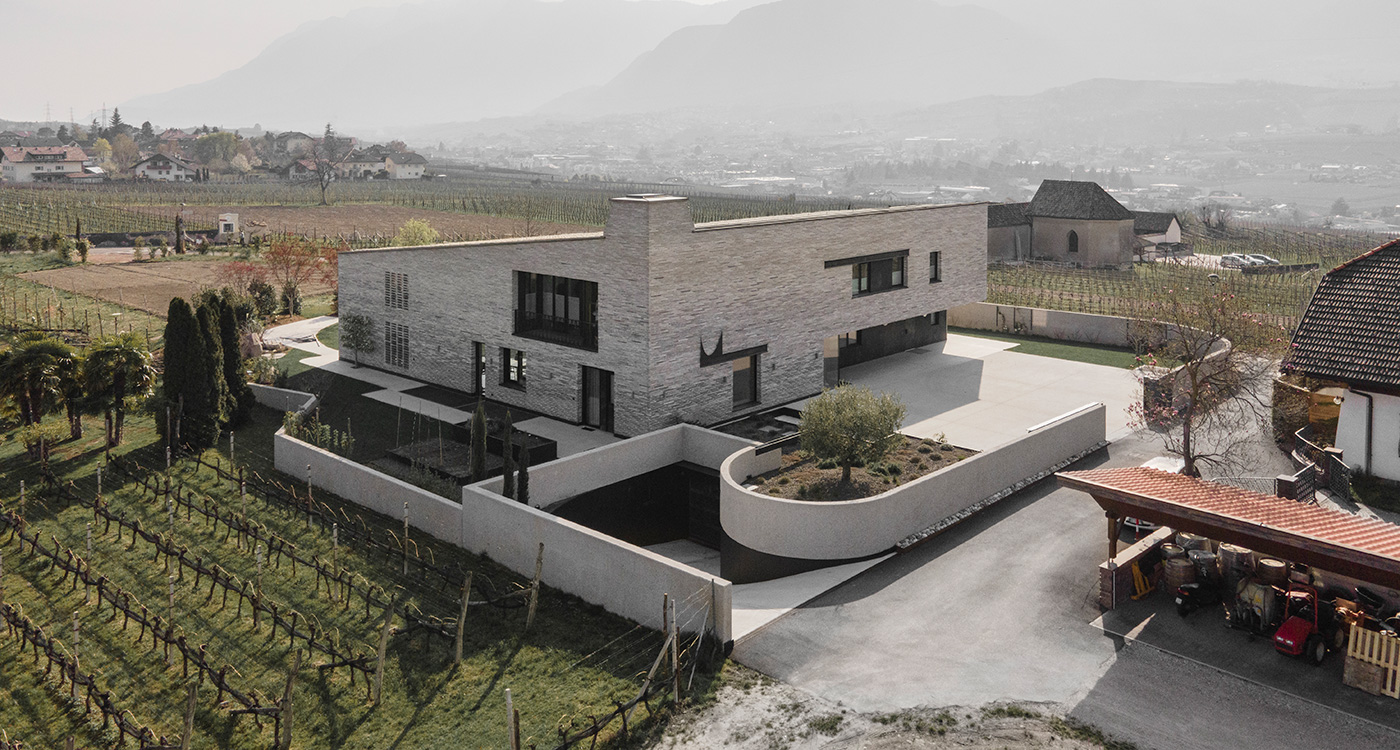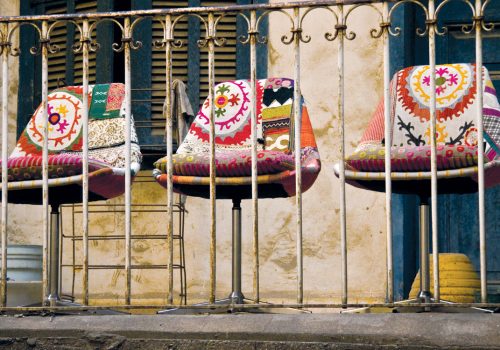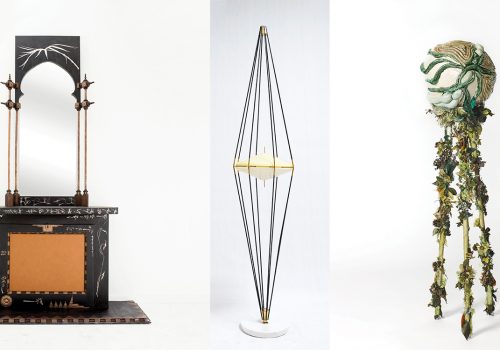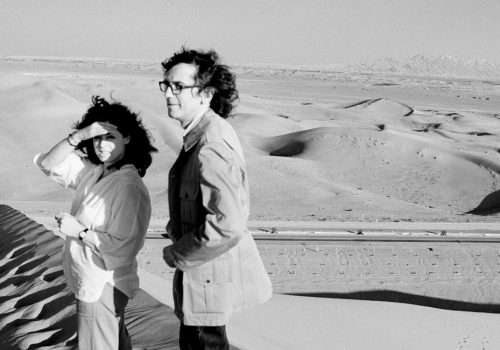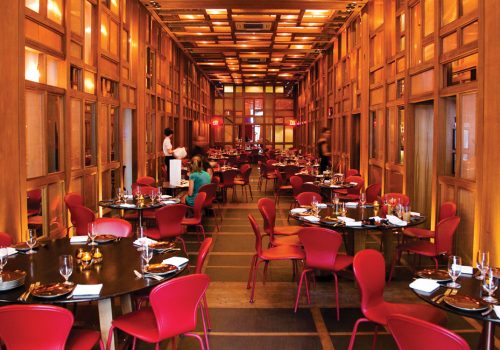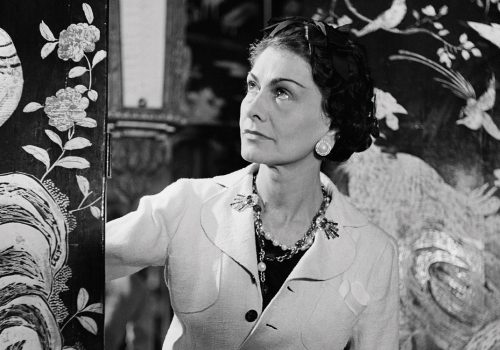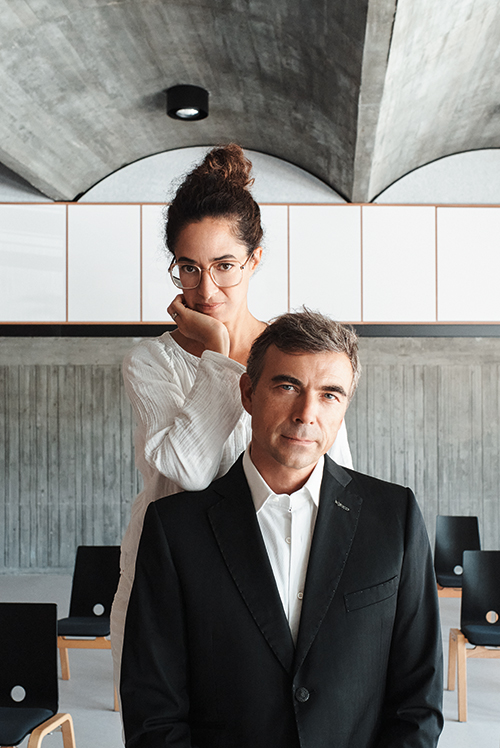
ABOVE: 55-year-old Scagnol and 49-year-old Attia, who are not just partners at work but in life as well, are gaining recognition and awards such as the Italian Architecture Prize, which they won last June.
The town of Bressanone in South Tyrol, where Sandy Attia lives and works, has a unique topography which makes for a very particular working environment, thanks to the dramatic and spectacular Dolomites Mountain range. “Here the mountains are very present, and the landscape is vertical so you’re always looking out onto the hillside,” explains Attia. This also means land is scarce in the valleys and the settlement areas are densely populated (real estate is even sold apparently in cubic metres).
South Tyrol is also an autonomous province (thanks to a post WWII agreement reached in 1946 after the former Austro-Hungarian region was annexed by Italy in 1919 under Benito Mussolini). This has resulted in a modern-day government that’s unusual in that it retains and uses the bulk of its tax revenues locally, and it does a sterling job at it too, especially when it comes to managing large-scale urban projects. This, of course, is a major advantage for engineers and architects operating in the region, like Attia. “South Tyrol has become known for contemporary architecture and there’s a lot going on here,” she stresses.
So, how exactly did Attia, who grew up in Kuwait as the child of an Egyptian father and an American mother end up working and raising her family in this idyllic German and Italian speaking Alpine town? “I was doing my masters in architecture at Harvard where I met Matteo Scagnol (the other half of MoDusArchitects).” Fast-forward a few years and they’re happily married and partners in their own architecture practice, headquartered in Bressanone where Scagnol grew up. Initially, they started out by entering architectural competitions (mostly done for public sector projects). As a result, their early resume comprised mostly of school buildings, hospitals, museums, and sports centres before they began to take on private projects, including hotels and residences. But they’re keen to point out that what is always closest to their hearts are projects that engage the community and make it a better place for the residents. “Architecture should be transformative and should change lives. this is the most rewarding part of our job,” explains Attia with clear sincerity.
Indeed, the award-winning duo have made numerous notable contributions to this part of Italy, such as TreeHugger, a curvy and modern tourist information office building for Bressanone and the sprawling contemporary sports facility, Fieldhouse, that has an 11-metre-high lighting tower. They also worked on the Bressanone-Varna Ring Road, developing a sculptural tunnel entrance, and making numerous smart interventions within a major civil engineering project (a 5-kilometre-long ring-road).
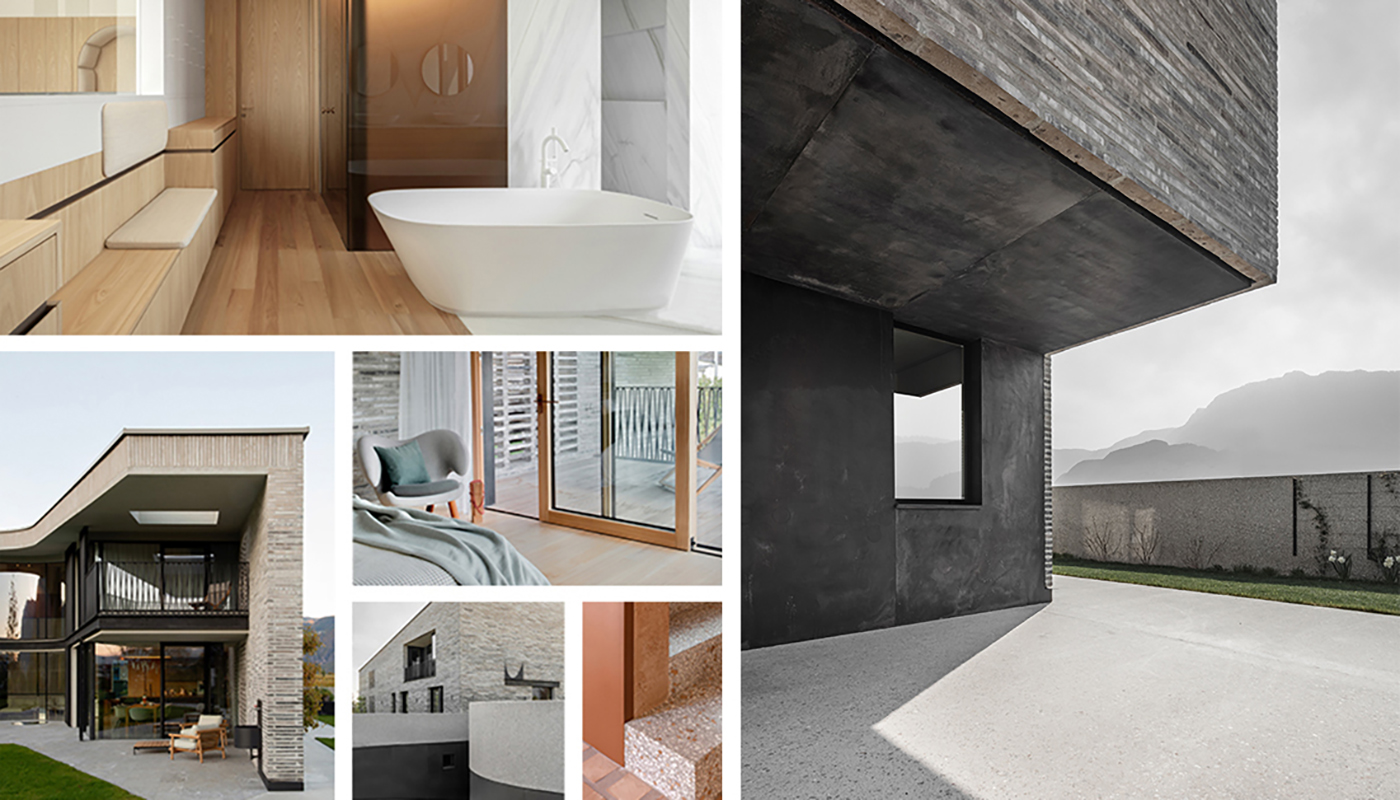
ABOVE: The three-storey Visibilio House is MoDusArchitects’ latest project to reach completion. It is located a wine-making area of South Tyrol, which is the northernmost region of Italy, and usually referred to as Alto Adige by Italians (meaning “Upper Adige,” referring to the river that runs through it).
Most recently, Attia and Scagnol completed an outstanding private residence, Visibilio House, which is a masterclass in South Tyrolean vernacular style and green living (the house received the CasaClima Gold Nature certification). Sitting on a plateau in a quiet wine making part of town, the three-level contemporary house was an “exciting architectural project” thanks in no small part to its “open-minded client.”
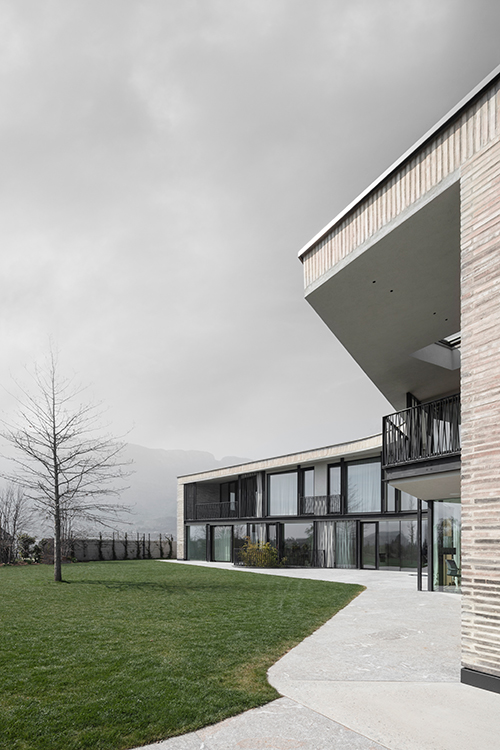 Attia explains that they formed a wide palette of materials – namely hand-made brick, terracotta, lime plaster, steel, wood, and glass – that spoke to the sedimentation of history, building techniques and their use in a contemporary world. “We were interested in giving the house the patina of time, as though it had stood there for years, when the owners moved in.” The interior is equally rich with an intentional variation of colours. For example, the lower level where you can find the garage and wine cellar has a dark Earthy terracotta tone, which gradually gets lighter as you go up. Moreover, Visibilio House has some diverse outdoor living areas as well, which complement the interior spaces and allow the residents to feel fully immersed in the natural landscape of northernmost Italy.
Attia explains that they formed a wide palette of materials – namely hand-made brick, terracotta, lime plaster, steel, wood, and glass – that spoke to the sedimentation of history, building techniques and their use in a contemporary world. “We were interested in giving the house the patina of time, as though it had stood there for years, when the owners moved in.” The interior is equally rich with an intentional variation of colours. For example, the lower level where you can find the garage and wine cellar has a dark Earthy terracotta tone, which gradually gets lighter as you go up. Moreover, Visibilio House has some diverse outdoor living areas as well, which complement the interior spaces and allow the residents to feel fully immersed in the natural landscape of northernmost Italy.
Coming from diverse backgrounds and cultures, each partner evidently brings their own craft and specific qualities but that they complement each other so well is testament to the respect they have for one another. “Matteo has a very strong background in history, so he approaches architecture with lessons from the past and how it can be very contemporary.” Attia, on the other hand being an outsider to both Italy and Europe as well, is totally unbound to its traditions and is therefore able to see things through a different lens and offer a fresh perspective on all the projects they create together.
Giving back through academia is also important for both of them. Like Scagnol, Attia has been a visiting professor at Princeton University and is currently a visiting professor at both the University of Virginia (UVA, where she obtained her B.S. in architecture) as well as at the Politecnico di Milano. Remarkably though, Attia admits that, unlike most teaching professionals who like to cover subjects from their architectural projects, Attia prefers to tackle new topics unrelated to her practice. She says she’s deeply interested in the relationship of humans to plants and animals in built environments, and regularly wades into complex topics impacting climate change. She’s also currently managing an interesting greenhouse and seedbank project (aimed at preserving seeds for the future to ensure biodiversity) at UVA.
Now that they’re established in their region, Attia and Scagnol say they are ready to expand their skills abroad. They recently completed an interior project in Dubai (commissioned by a close friend) for a children’s and adult mental health clinic and are currently working on a collaborative school project in Stuttgart, Germany, in addition to several local projects. But Attia is keen to work more in the Arab world, revealing she still has a strong affinity for the region. “Having grown up in Kuwait, the context of the Gulf is home to me, it’s part of my culture and a region I love.”
Let’s hope one day then that they will turn their attention here and add something truly extraordinary to the Middle Eastern landscape.
PHOTOGRAPHY: GUSTAV WILLEIT & PAOLO ABATE
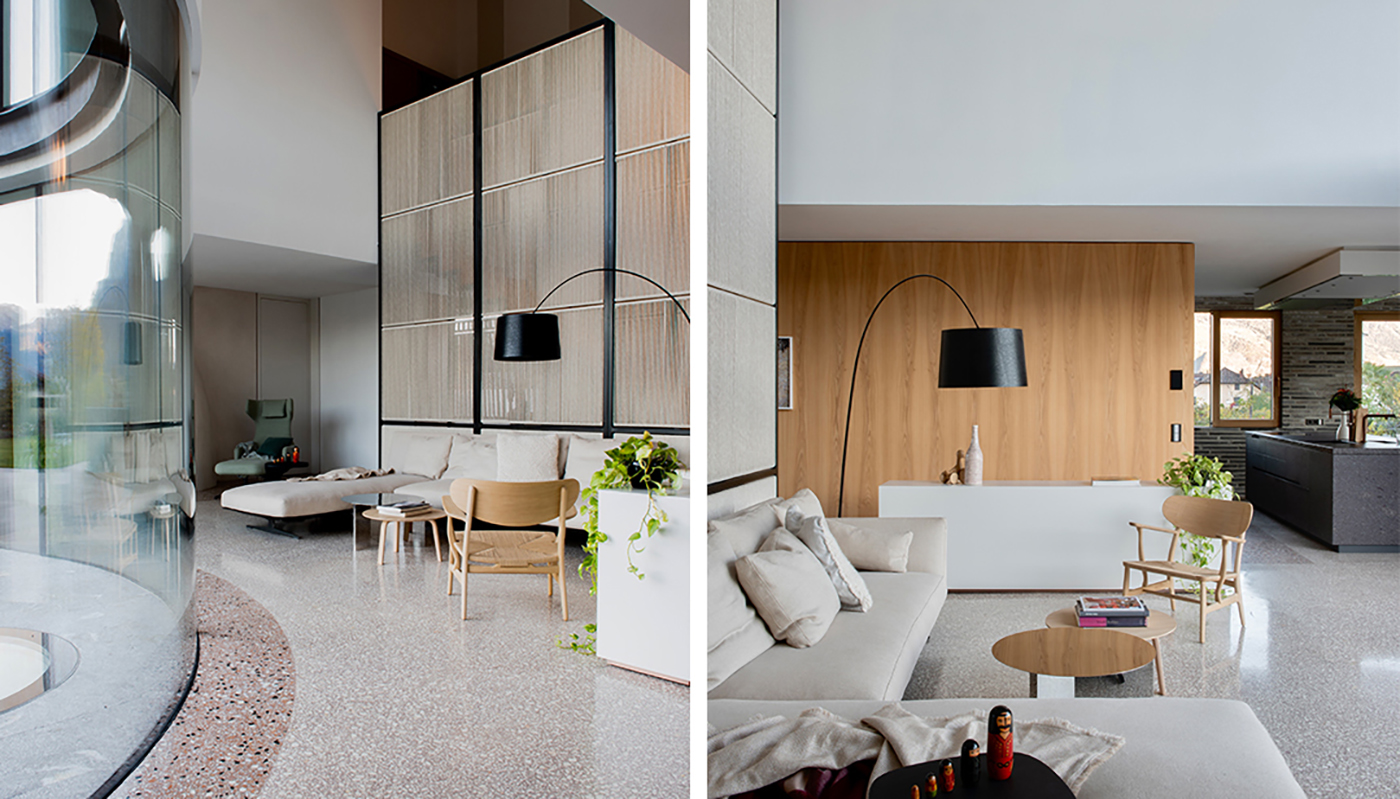
ABOVE: The double-height living room is the fulcrum around which the rest of the house revolves: the kitchen, dining area, guest quarters, study, and multimedia room.


